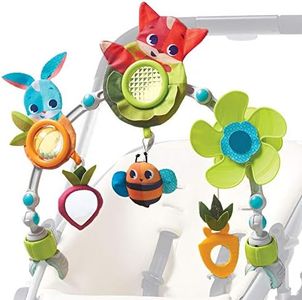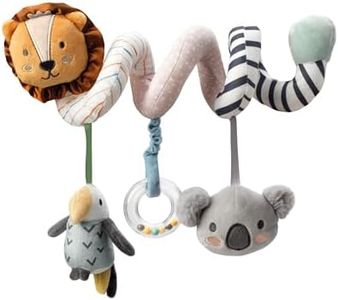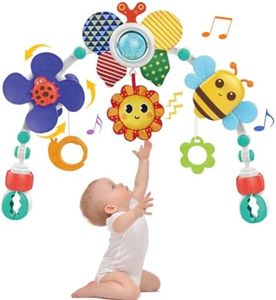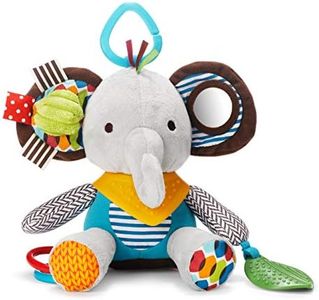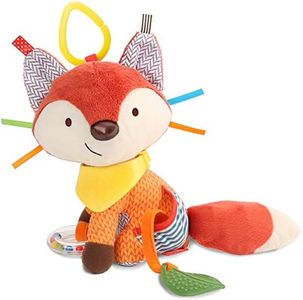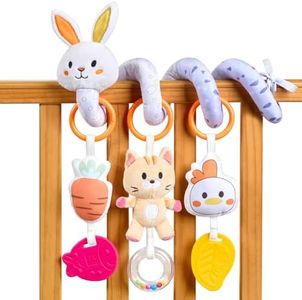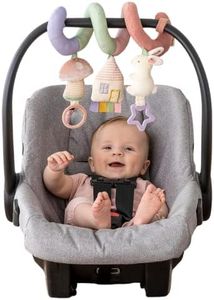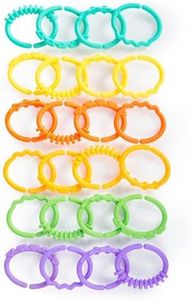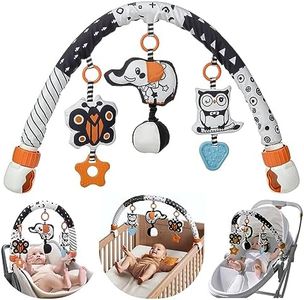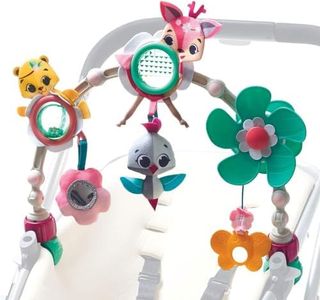We Use CookiesWe use cookies to enhance the security, performance,
functionality and for analytical and promotional activities. By continuing to browse this site you
are agreeing to our privacy policy
10 Best Car Seat Toys
From leading brands and best sellers available on the web.Buying Guide for the Best Car Seat Toys
Choosing the right car seat toy for your child can make car rides more enjoyable and stimulating for little ones. The main goal is to keep your child entertained and engaged, while also ensuring the toy is safe and suitable for their age. As you look at different options, consider how the toy will be used in your specific car setup, how easy it is to clean, and whether it attaches securely without becoming a distraction.Age AppropriatenessThis refers to the recommended age range for the toy, usually found on the packaging. It's important because toys designed for older children might have small parts or complex features that aren't safe for babies and young toddlers. Generally, toys for 0-6 months focus on high-contrast colors and simple textures, while those for 6-12 months might have things to grab, shake, or chew. For toddlers, you might find toys with more buttons, music, or lights. Pick a toy that fits your child's current development stage and skills.
Attachment MethodThis is how the toy connects to the car seat, such as with clips, straps, or Velcro. It's important to make sure the toy can be attached securely so it doesn't become a projectile in case of sudden stops. Clip-on and Velcro styles are common; clip-ons tend to stay put but may be harder for adults to remove quickly, while Velcro is easy to use but can loosen if handled roughly. Choose an attachment method that fits your child's age and activity level, and that fits your car seat's design.
Safety and MaterialsThis covers what the toy is made of and whether it's free from harmful chemicals, as well as whether it poses any choking hazards. Safe toys should be made from non-toxic, BPA-free materials and should not have small, removable parts. Soft plush toys are generally safest for young babies, while harder plastics can be fine for older kids who won’t put them in their mouths. Always check for safety labels and choose toys from reputable brands.
Sensory FeaturesSensory features include elements like rattles, mirrors, crinkly fabrics, lights, music, or textures. These are important because they help stimulate a baby's eyesight, hearing, and motor skills. Simple, quiet toys are best for younger or easily overstimulated children, while older babies and toddlers may benefit from something with multiple features or sounds. Think about how easily your child gets bored or overwhelmed and pick sensory features that match their temperament.
Ease of CleaningThis refers to how simple it is to wash or wipe down the toy. Since toys often end up in little mouths or sticky fingers, easy cleaning is a must. Some toys are machine washable, others just need a wipe with a damp cloth. If your child is still in the 'chewing everything' phase or you want to save time, opt for machine-washable or waterproof designs.
Size and MobilityThis includes the toy's dimensions and how easily it can be moved or packed away. Large, bulky toys can get in the way or make it hard to use the car seat buckles, while very small toys might get lost or become a choking hazard. Consider the space in your car and how easily you want to be able to take the toy in and out. Look for something that fits snugly without creating clutter.

